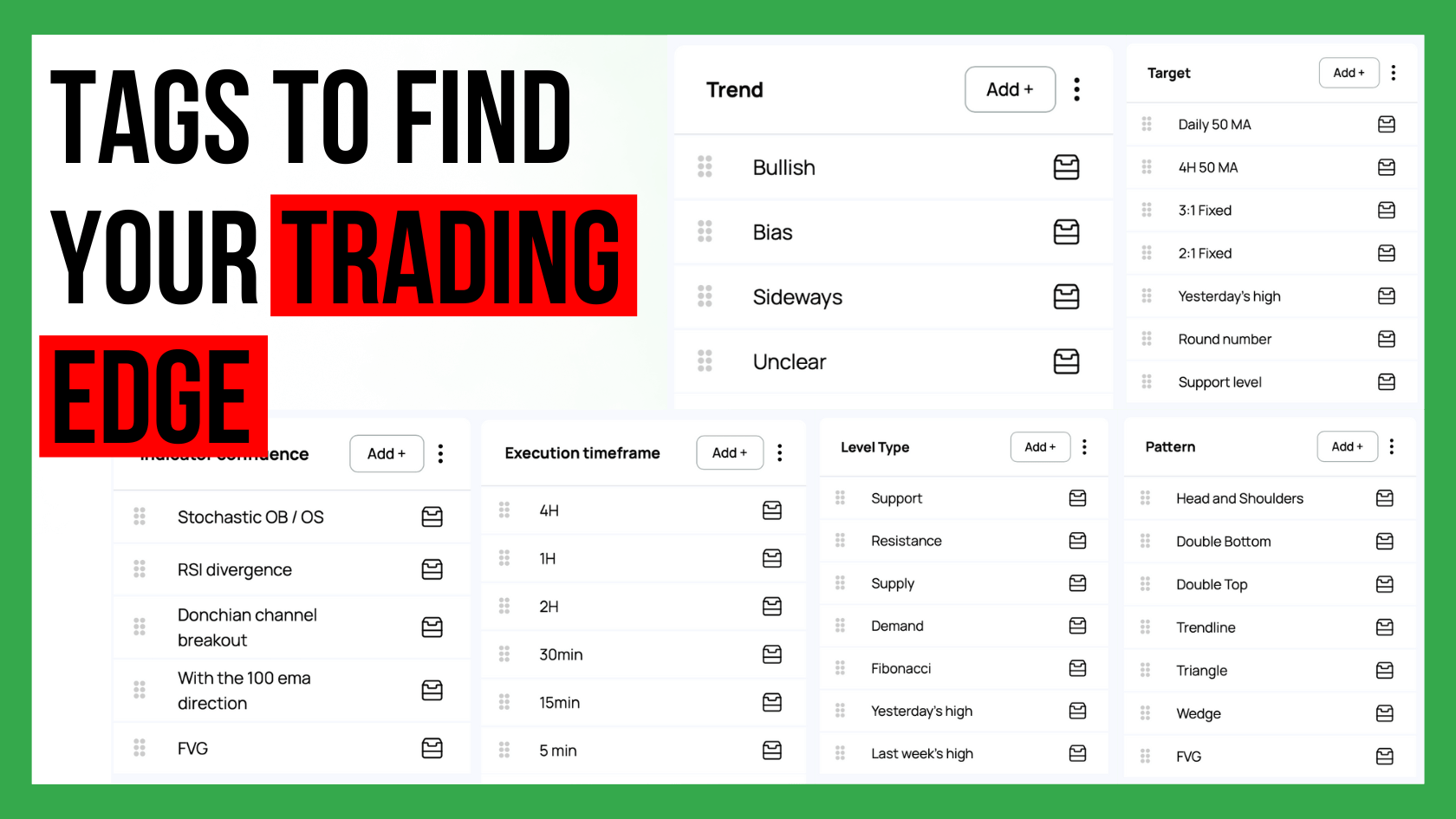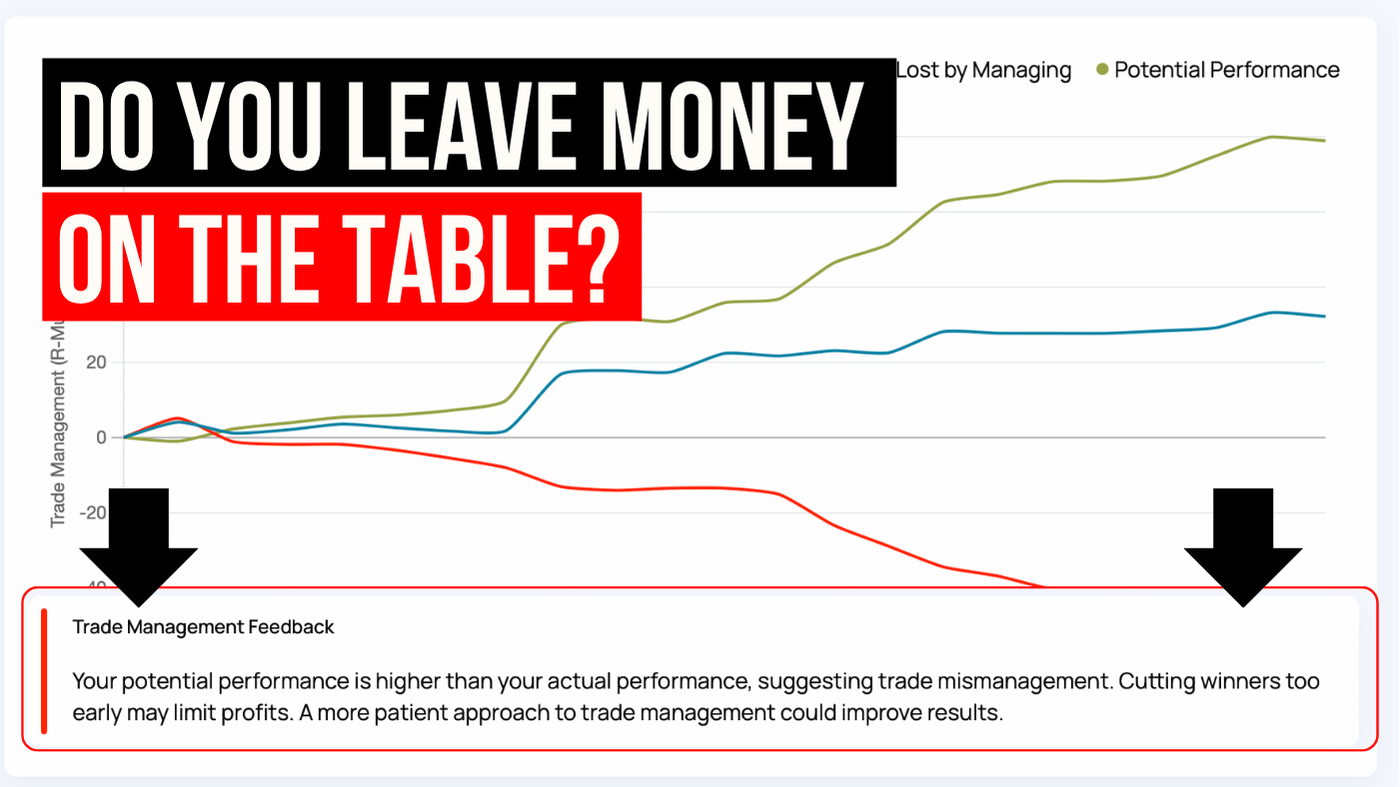Top Custom Trading Statistics Every Trader Should Track
Custom statistics can turn a trading journal into a powerful source of insight because they show the specific conditions that shape your performance....
3 min read
Rolf Nov 20, 2024 3:38:00 PM

When it comes to trading, one of the biggest questions traders face is: Should you use technical analysis or fundamental analysis to make trading decisions? The answer depends on several factors, including your trading goals, time horizon, and personal preferences.
Both methods have their advantages and limitations, and their effectiveness often depends on the market you are trading and of course your own abilities. They are just tools, after all.
In this article, we'll explore the key differences between technical and fundamental analysis, the strengths and weaknesses of each, and how you can determine which approach best fits your trading style.
Technical analysis is centered on price action and market data. It involves analyzing charts, price patterns, and various technical indicators like moving averages, Relative Strength Index (RSI), and Bollinger Bands to anticipate future price movements. The core assumption behind technical analysis is that all relevant information is already reflected in the asset’s price, so studying historical price data can reveal trends, identify repeating patterns, and help forecast future movements.
Works Best For:
Short-term trading: Technical analysis is particularly popular among day traders, swing traders, and scalpers, who seek to profit from short-term price fluctuations over minutes, hours, or days.
Market sentiment: Traders who focus on market psychology use technical analysis to identify potential entry and exit points based on price trends and momentum.
Strengths of Technical Analysis:
Immediate action: Technical analysis provides clear, actionable signals that can help traders make decisions quickly.
Timely decisions: It's ideal for traders who try to capitalize on short-term price swings, offering entry and exit signals based on real-time market movements.
Quantitative and data-driven: With technical analysis, you could automate strategies using algorithms and backtest historical data to fine-tune trading approaches.
Weaknesses of Technical Analysis:
Ignores fundamentals: It doesn’t consider the underlying value of an asset, meaning external factors like earnings reports or macroeconomic events could disrupt price patterns unexpectedly.
Fundamental analysis, in contrast, is focused on determining the intrinsic value of an asset. For stocks, this means analyzing a company’s financial health by reviewing earnings reports, balance sheets, cash flows, and its competitive position. On a macro level, fundamental analysis considers broader factors like interest rates, inflation, and economic growth, which can affect asset prices in any market.
Works Best For:
Long-term investing: Fundamental analysis is ideal for long-term investors who plan to hold positions for months, years or even decades. Investors like value investors or those focused on dividends rely on it to find assets with strong long-term potential.
Stock markets: Fundamental analysis shines when analyzing company stocks, allowing traders to identify undervalued or overvalued companies based on their financial performance.
Stable markets: Markets where intrinsic value drives price movements, such as large-cap stocks or bonds and futures (commitment of traders!), are best suited for fundamental analysis.
Strengths of Fundamental Analysis:
Long-term value: By focusing on an asset’s financial health and growth potential, fundamental analysis helps investors find undervalued assets with sustainable growth prospects.
Deeper insight: It offers a comprehensive understanding of an asset, taking into account broader economic trends, financial metrics, and the competitive landscape.
Confidence in holding: Investors using fundamental analysis are generally more confident during market downturns, trusting that the asset's intrinsic value will be realized in the long run.
Weaknesses of Fundamental Analysis:
Slow to act: Fundamental analysis isn’t effective for making quick trading decisions in fast-moving markets, where short-term price fluctuations are driven by sentiment and technical factors.
Market inefficiencies: The market doesn’t always reflect an asset's intrinsic value immediately. An undervalued stock may remain undervalued for a long time, frustrating investors who are waiting for the market to correct itself.
Timing: It is almost impossible to time your entries correctly using fundamental analysis alone.
For Short-Term Trading: Technical Analysis
Short-term traders, like day traders and swing traders, generally prefer technical analysis because it focuses on price action and sentiment. Traders need to make quick decisions, and technical indicators provide the necessary signals for entry and exit points based on real-time market data.
For Long-Term Investing: Fundamental Analysis
Long-term investors benefit more from fundamental analysis, as they are focused on the intrinsic value of the asset. This approach helps investors identify stocks or assets with solid financials, good management, and long-term growth potential, enabling them to hold positions for years.
Yes, you should. Many of the most successful traders and investors use a hybrid approach, combining both technical and fundamental analysis to get the best of both worlds.
Long-term investors may use fundamental analysis to identify a company with strong financials and growth potential, then apply technical analysis to time their entry or exit points. For instance, an investor might wait for a stock to break out of a consolidation pattern before buying based on positive data.
Short-term traders might glance at fundamental data, such as earnings reports or economic indicators, to avoid making trades right before a major news event that could cause sudden price movements, to then jump onto the move once the market has decided on a direction.
Your personality and risk tolerance play a huge role in determining which analysis works best for you. Both approaches have different underlying beliefs, require unique skill sets, and need different workflows. You must trade an approach that is suited to both your personality and your time constraints.
When it comes to trading, neither technical nor fundamental analysis is universally better. The key is to match the right method to your personality, time horizon, and risk tolerance.
For many traders, a combination of both approaches can provide a more well-rounded strategy, allowing them to take advantage of short-term price swings while keeping an eye on long-term value. Ultimately, the best approach is the one that aligns with your personal goals, personality, and market conditions.

Custom statistics can turn a trading journal into a powerful source of insight because they show the specific conditions that shape your performance....

Choosing how many trading strategies you should trade is one of the most important decisions for long term success. Many traders believe that more...

Many traders know how to enter a position but become uncertain once the trade is active. This is the moment when emotions influence decisions, exits...